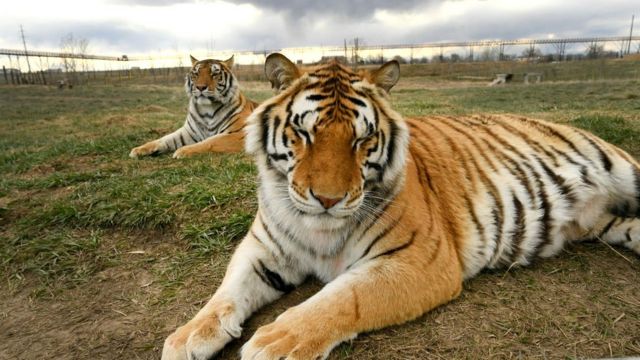
How Much Does A Catfish Grow in A Year. Often the cubs are taken from the mother at a very early age depriving the cubs of proper nutrition.

FOUR PAWS believes that only certified zoological facilities and sanctuaries that live up to certain standards should be allowed to keep big cats.
How long do big cats live in captivity. I have seen tigers live to 25 and Ive seen them die well before 16. Big cats suffer from many of the same type of illnesses and weaknesses as humans do which means they can fall victim to cancers infections parasites inherited and congenital defects and more. More tigers live in captivity in the United States than live in the wild.
Tigers are an endangered species. It is estimated that only 3900 of these majestic animals live in wild habitats in India Nepal Bhutan Russia and China. Meanwhile anywhere from 5000-10000 tigers live in captivity in the US.
Much of the increase in captive population comes from intentional breeding meant for monetary. The cats are highly inbred because a small percentage of tigers carry the double recessive gene necessary to produce the tigers white coats. Consequently they often suffer congenital defects and lifelong health problems.
Big cats including ligers and tigons would never exist in nature as they result from cross-breeding two different animal species. A liger is a cross between a male lion and female. It is estimated that over 10000 big cats like tigers and lions are privately owned in the US.
Big cats are sometimes bred simply because people want them as a pet but more often they are bred for commercial use such as roadside zoos that charge the public money to take pictures with big cat cubs. Often the cubs are taken from the mother at a very early age depriving the cubs of proper nutrition. In the wild big cats spend their time traveling vast distances to hunt seek mates and stake out territory.
Most species are primarily nocturnal and with the exception of lions and male cheetahs are solitary by nature. Housing incompatible animals together in cramped quarters has frequently led to big cats killing their cage mates. Most of the estimated 5000 to 7000 captive tigers in the US.
In the United States there are as many as 10000 big cats in captivity. These animals are at risk for abuse and often live in terrible conditions. In private hands menageries masquerading as rescue sanctuaries and at unqualified roadside zoos operating with little oversight or accountability.
When big cats are surrendered or confiscated rescue. Captivity and confinement has had devastating effects on humans and the same can be true in the case of wild animals especially the big cats. In this new study scientists observe the hormones produced by captive big cats like the Bengal Tiger or Leopard to measure the amount of stress they endure during captivity.
The study also throws light on stereotypy - a coping. Surprisingly the domestic cat has a longer lifespan than some of the larger cats even when in captivity. The Tiger for example has an average lifespan of 8-10 years in the wild or 15-20 years in captivity.
The Lion is 10-16 years extended to 20-25 years in captivity while the jaguar is 12-15 years in the wild and up to 23 years in captivity. Smaller cats such as the Bobcat is only 6-8 years in the wild but up to 25 years when living in captivity. However captive wildcats can live for considerably longer than cats living in the wild for obvious reasons.
However it is not all bad news of course. A health tiger or lion in the wild in the good old days might live on average for 10-15 years or 16-20 years in captivity. FOUR PAWS believes that only certified zoological facilities and sanctuaries that live up to certain standards should be allowed to keep big cats.
At the same time the species-appropriate keeping of wild animals in even the best of zoos is extremely difficult. Problems arise due to inadequate space poor health and nutrition and a lack of natural surroundings social structure and enrichment. Big cats find themselves living closer to humans and so they often prey on livestock which causes human conflict.
Farmers often kill big cats because they perceive them as threats to their livelihood. Smaller habitat areas also often leads to inbreeding which leads to health problems. Poaching is a serious threat to big cats.
They are hunted for their body parts which are often used in traditional. Due to the unavailability of land and food and the dangerous threat brought on by ranchers and poachers the Cheetahs lifespan in the wild is 4-6 years where as in captivity the Cheetah will live to 10-15 years. How long do they live.
The oldest Ringtail on record in captivity was 16 years old. How many babies do they have. They can have between one and four babies but two is common.
If conditions are ideal you can expect a catfish in capacity to live 10 years or slightly longer in captivity if conditions are controlled and well maintained. How Much Does A Catfish Grow in A Year. Rabbits in captivity usually live between 8 and 12 years as opposed to the wild bunnies that can only live a few years due to the exposure to the various adverse environmental conditions as well as predators diseases and starvation.
The lifespan of a bunny relies on several factors.